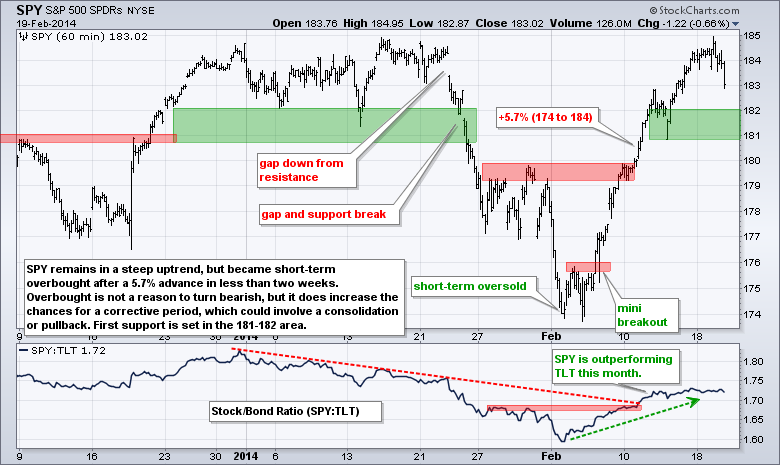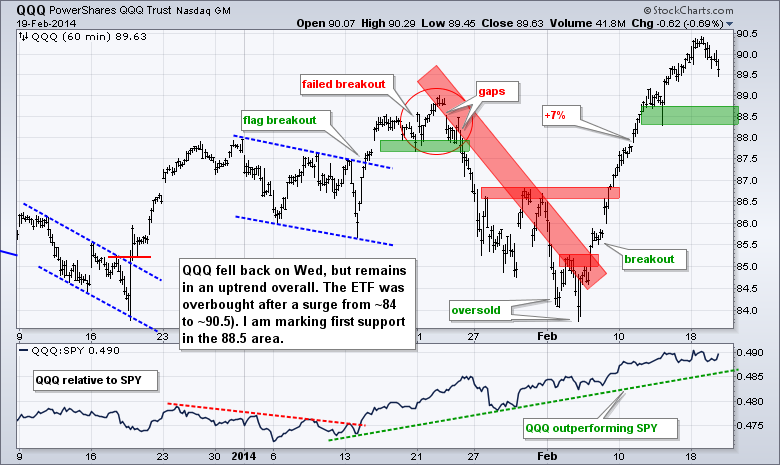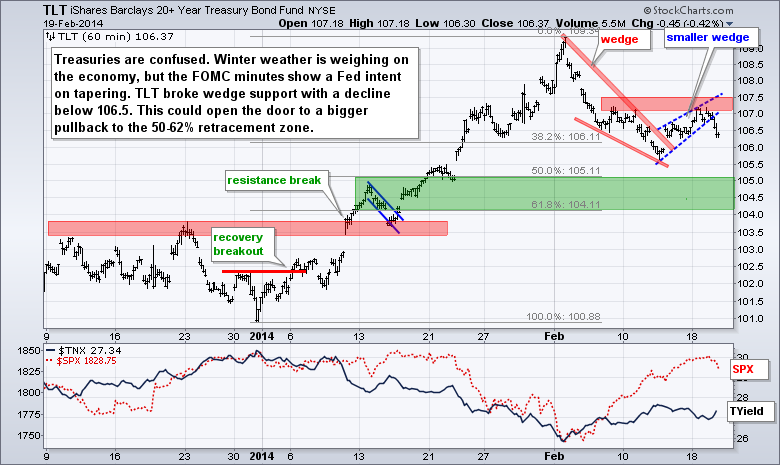Stocks started the week in strong uptrends, but were overbought after big moves in the first half of February. The release of the FOMC Minutes provided the trigger for some profit taking as stocks turned south in the afternoon. The declines, however, were relatively modest with the Nasdaq 100 ETF (QQQ) falling .69% and the Russell 2000 ETF (IWM) losing 1.02%. The Finance SPDR (XLF) led the sector lower with a 1.38% loss on the day. The Regional Bank SPDR (KRE) was hit for a 2.8% decline. The Fed's determination to continue its taper weighed on gold and the Gold Miners ETF (GDX), both of which were also overbought after sharp advances. The 20+ YR T-Bond ETF (TLT) also took a hit and broke wedge support. The PerfChart below shows the Home Construction iShares (ITB), Regional Bank SPDR (KRE) and Transport iShares (IYT) lagging during the February advance. Meanwhile, the Internet ETF (FDN), Semiconductor SPDR (XSD) and the Biotech SPDR (XBI) are powering the Nasdaq.
**This chart analysis is for educational purposes only, and should not
be construed as a recommendation to buy, sell or sell-short said securities**



**************************************************************

**************************************************************

**************************************************************

**************************************************************

***************************************************************
Key Reports and Events (all times Eastern):
Thu - Feb 20 - 08:30 - Initial Jobless Claims
Thu - Feb 20 - 08:30 - Consumer Price Index (CPI)
Thu - Feb 20 - 10:00 - Philadelphia Fed
Thu - Feb 20 - 10:00 - Leading Economic Indicators
Thu - Feb 20 - 10:30 - Natural Gas Inventories
Thu - Feb 20 - 11:00 - Crude Oil Inventories
Fri - Feb 21 - 10:00 - Existing Home Sales
Charts of Interest: Tuesday and Thursday
This commentary and charts-of-interest are designed to stimulate thinking. This analysis is
not a recommendation to buy, sell, hold or sell short any security (stock ETF or otherwise).
We all need to think for ourselves when it comes to trading our own accounts. First, it is
the only way to really learn. Second, we are the only ones responsible for our decisions.
Think of these charts as food for further analysis. Before making a trade, it is important
to have a plan. Plan the trade and trade the plan. Among other things, this includes setting
a trigger level, a target area and a stop-loss level. It is also important to plan for three
possible price movements: advance, decline or sideways. Have a plan for all three scenarios
BEFORE making the trade. Consider possible holding times. And finally, look at overall market
conditions and sector/industry performance.







